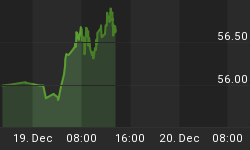
![]() Larger Image - Source: www.sharelynx.com
Larger Image - Source: www.sharelynx.com
When it comes to the market indices, everyone focuses on the nominal level. The nominal price is the most visible and the one that analysts, investors and the media mention in their reports. But it is also important to look at the markets on an inflation adjusted basis. Inflation can take a bite.
As spectacular as the rebound in the Dow Jones Industrials (DJI) has been since the financial crisis of 2008 ended in March 2009 the recovery has actually been quite anaemic when compared to other rebounds from 30% plus declines. The rebound has been below average in terms of both duration and magnitude. On an inflation adjusted basis the current market remains below both the highs of 2000 and 2007. The decline that occurred in 2008 took the DJI down to about the levels seen at the time of the market highs - in 1966. The 1982 stock market low was on an inflation adjusted basis barely above the low of 1942.
Maybe the reason so few pay any attention to the inflation adjusted indices is because they would be shocked at how little the market has moved. The chart above shows the DJI since 1970 coinciding closely with the period of fiat money after former President Richard Nixon took the world off the gold standard in August 1971. Since then both money and debt have exploded so it is probably no surprise that the stock markets have gone up as well. The change since then has been interesting.
| Gain since 1970 | |
| Dow Jones Industrials (DJI) | 1,830% (nominal) |
| Dow Jones Industrials (DJI) | 300% (inflation adjusted) |
| Money Supply (M1) | 1,123% |
| Credit Market Debt (Flow of Funds) | 2,437% |
| US GDP | 1,413% |
| Gold | 3,007% (nominal) |
| Gold | 480% (inflation adjusted) |
Since 1970, the DJI is only up 300% on an inflation-adjusted basis. That compares to the 1,830% the DJI has gained on a nominal basis. Money supply (M1) has gone up 1,123% and US GDP is up 1,413% in the same period. However, debt has grown even faster up 2,437% (as reported by the Federal Reserve Flow of Funds Credit Market Debt Outstanding). This suggests it has taken almost $2 in debt to purchase a $1 of GDP since 1970. This is not surprising and defines the current period where the ability to add more debt has effectively hit a wall. Following the recession of 2000-2002, it was taking almost $5 of new debt to purchase $1 of GDP. Today it would take even more.
If there is a surprise it is that gold has outperformed the stock markets on both a nominal and inflation-adjusted basis. Gold remains below its 1980 highs on an inflation-adjusted basis although it has taken it out on a nominal basis. This gain comes despite a long bear market in gold from roughly 1980 to 2001 and includes the recent correction.
Inflation does take a bite out of return on investments. While stocks have done well, gold has registered an even stronger performance. Given the debt problems of the western economies gold is expected to continue to outperform despite the recent setback.
The chart of the CPI adjusted gold price is below.

![]() Larger Image - Source: www.sharelynx.com
Larger Image - Source: www.sharelynx.com















